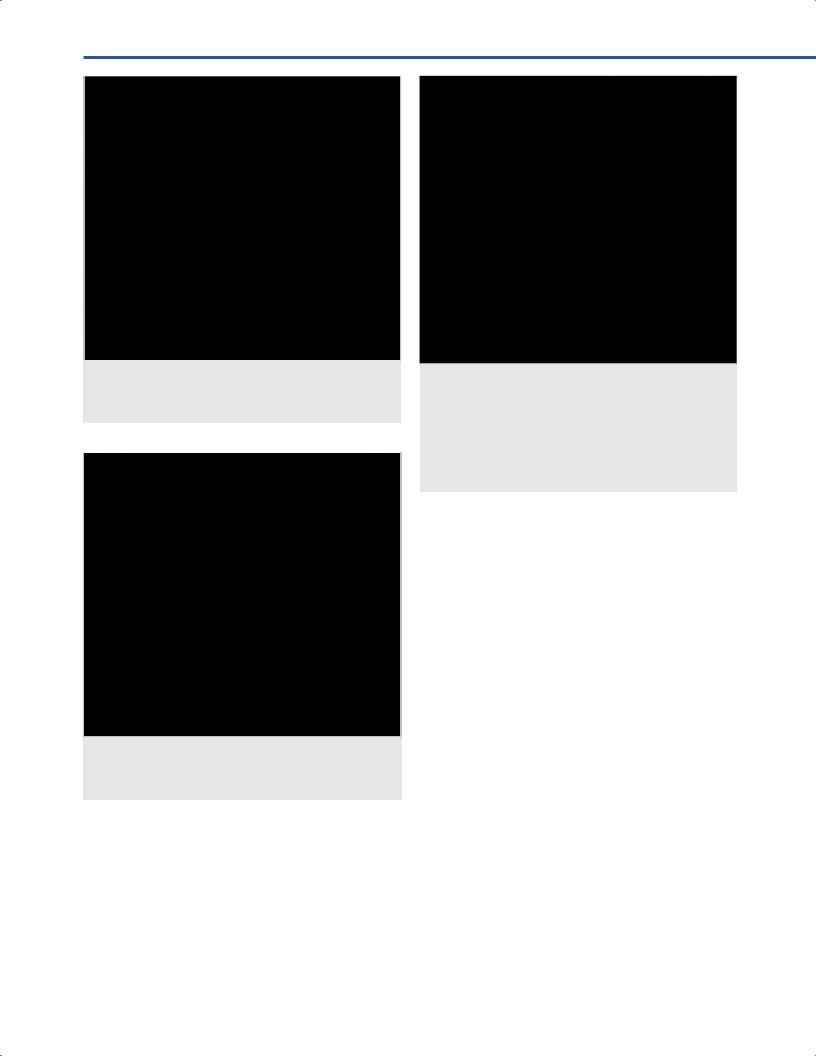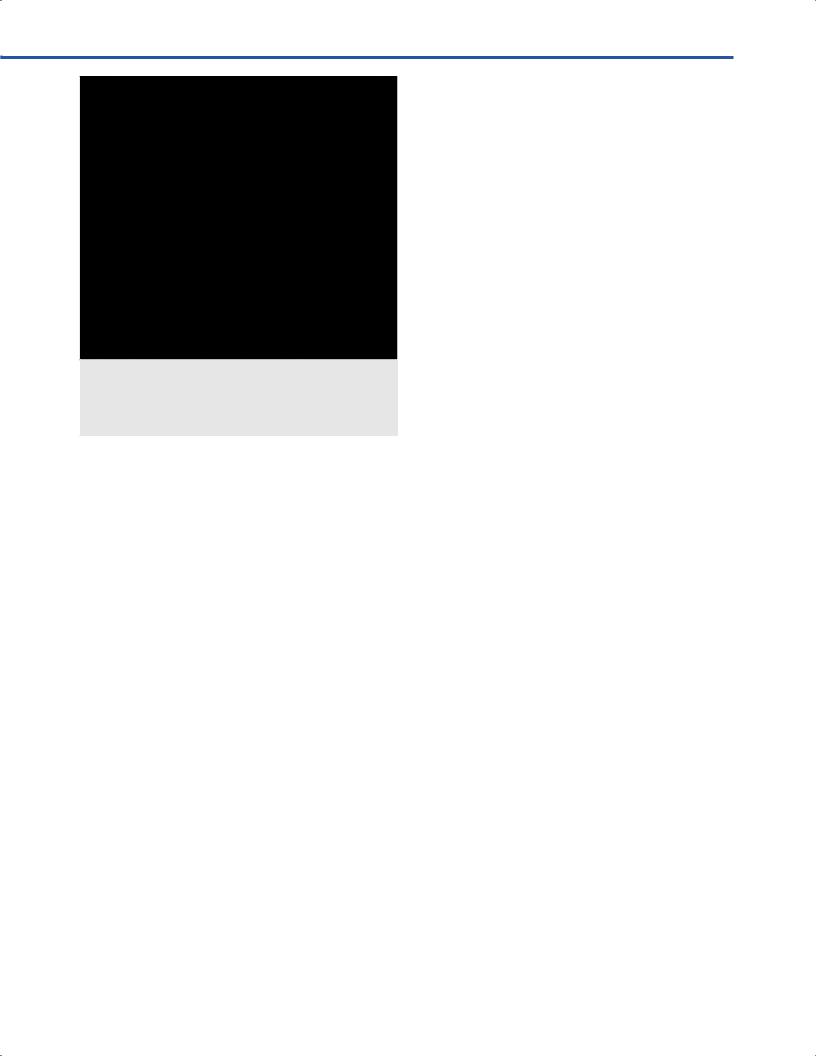
- •Operative Cranial Neurosurgical Anatomy
- •Contents
- •Foreword
- •Preface
- •Contributors
- •1 Training Models in Neurosurgery
- •2 Assessment of Surgical Exposure
- •3 Anatomical Landmarks and Cranial Anthropometry
- •4 Presurgical Planning By Images
- •5 Patient Positioning
- •6 Fundamentals of Cranial Neurosurgery
- •7 Skin Incisions, Head and Neck Soft-Tissue Dissection
- •8 Techniques of Temporal Muscle Dissection
- •9 Intraoperative Imaging
- •10 Precaruncular Approach to the Medial Orbit and Central Skull Base
- •11 Supraorbital Approach
- •12 Trans-Ciliar Approach
- •13 Lateral Orbitotomy
- •14 Frontal and Bifrontal Approach
- •15 Frontotemporal and Pterional Approach
- •16 Mini-Pterional Approach
- •17 Combined Orbito-Zygomatic Approaches
- •18 Midline Interhemispheric Approach
- •19 Temporal Approach and Variants
- •20 Intradural Subtemporal Approach
- •21 Extradural Subtemporal Transzygomatic Approach
- •22 Occipital Approach
- •23 Supracerebellar Infratentorial Approach
- •24 Endoscopic Approach to Pineal Region
- •25 Midline Suboccipital Approach
- •26 Retrosigmoid Approach
- •27 Endoscopic Retrosigmoid Approach
- •29 Trans-Frontal-Sinus Subcranial Approach
- •30 Transbasal and Extended Subfrontal Bilateral Approach
- •32 Surgical Anatomy of the Petrous Bone
- •33 Anterior Petrosectomy
- •34 Presigmoid Retrolabyrinthine Approach
- •36 Nasal Surgical Anatomy
- •37 Microscopic Endonasal and Sublabial Approach
- •38 Endoscopic Endonasal Transphenoidal Approach
- •39 Expanded Endoscopic Endonasal Approach
- •41 Endoscopic Endonasal Odontoidectomy
- •42 Endoscopic Transoral Approach
- •43 Transmaxillary Approaches
- •44 Transmaxillary Transpterygoid Approach
- •45 Endoscopic Endonasal Transclival Approach with Transcondylar Extension
- •46 Endoscopic Endonasal Transmaxillary Approach to the Vidian Canal and Meckel’s Cave
- •48 High Flow Bypass (Common Carotid Artery – Middle Cerebral Artery)
- •50 Anthropometry for Ventricular Puncture
- •51 Ventricular-Peritoneal Shunt
- •52 Endoscopic Septostomy
- •Index

41 Endoscopic Endonasal Odontoidectomy
Ellina Hattar, Eleonora F. Spinazzi, Jean Anderson Eloy, Cristian Gragnaniello, and James K. Liu
41.1 Introduction
The transoral route has served as the gold-standard approach for treating pathologies of the craniocervical junction. Since its emergence, this microscopic transoral approach has been the preferred route for performing anterior odontoidectomy to decompress the craniovertebral junction.
Pathologies that have been treated with this route have included basilar invagination, platybasia with retrofexed odontoid process, rheumatoid pannus, chordomas, and chondrosarcomas.
Extended versions of the transoral approach used to increase visualization as well as the operative feld have included the extended “open-door” maxillotomy, transpalatal, transmaxillary, and transmandibular approaches. In recent years, the endoscopic endonasal approach has emerged as a minimally invasive surgical alternative.
The technique is especially well suited for pathologies located above the palatine line. By avoiding the oral cavity and obviating the need for oral retraction, the endonasal route avoids complications associated with tongue swelling, prolonged intubation, tracheal swelling, velopharyngeal insufciency, dysphonia, and dysphagia. The procedure is also associated with a shorter hospital stay and post-operative recovery. In this chapter, we describe the operative technique and surgical nuances for performing endoscopic endonasal odontoidectomy.
•Symptomatic and compressive rheumatoid pannus refractory to posterior stabilization.
•Os odontoideum.
•Retrofexed odontoid process associated with Type I Chiari malformation resulting in compressive myelopathy.
41.3 Patient Positioning (Figs. 41.1, 41.2)
•Position: The patient is positioned supine in neutral position with the head fxed with a Mayfeld head holder.
•Body: The body is positioned horizontal.
•Head: The head is placed in neutral position, no fexion or extension, no head rotation are needed.
•Anti-decubitus device: All pressure points are adequately padded; an anti-decubital pad is placed on the sacrum.
•The nasal tip is the highest point in the surgical feld.
•Gentle axial traction can be applied to the head before fnal fxation of the Mayfeld head holder to allow for some decompression of the cervico-medullary junction.
•Use CT-based frameless stereotactic image guidance for intraoperative localization.
•Use somatosensory and motor evoked potential neurophysiologic monitoring.
41.2 Indications
•Irreducible basilar invagination causing brainstem compression and myelopathy.
41.4 Exposure and Incision
•Goldman elevator is used to lateralize the middle and inferior turbinates.
Fig. 41.1 Patient positioning. The patient is positioned supine with the head in a Ma ld head holder.
255

VEndonasal, Transoral, and Transmaxillary Procedures
•Pedicled Nasoseptal Flap (PNSF) (See Chapters 38 and 39)
○Right fap is harvested with care to preserve the vascular pedicle supplied by the posterior septal branch of the sphenopalatine artery.
○Flap is elevated from the muco-perichondrium and mu- co-periosteum.
○Flap is tucked into the ipsilateral middle meatus until the reconstruction phase with the vascular pedicle superior to the level of the choana.
○PNSF harvesting is repeated on the contralateral side.
•Posterior septectomy (Fig. 41.3)
○The posterior and inferior aspect of the bony and cartilaginous septum are removed to allow triangulation of instruments using binostril access.
○The mucosal integrity of the posterior nasal septum is preserved.
41.4.1 Critical Structures
•Eustachian tubes.
•Bilateral upper cervical carotid arteries.
•Bilateral vertebral arteries.
•Sympathetic chain.
41.5 Soft Tissue Dissection
•Mucosal incision and pharyngeal muscles (Fig. 41.4)
○A longitudinal midline incision is made over the posterior or pharyngeal mucosal wall overlying the tubercle of the atlas (C1).
○The incision is extended vertically to expose the inferior clivus (superiorly), down to the second cervical vertebral (C2) body (inferiorly).
○The incision is extended through the mucosa along the midline raphe, between the pharyngeal muscles, and through the anterior longitudinal ligament down to the bone of C1.
Fig. 41.2 Stereotactic frameless image guidance is used and the nose and nares are prepped with betadine.
Abbreviations: NN = neuronavigator.
○The longus colli and longus capitis muscles are mobilized laterally with an extended length and protected tip Bovie monopolar cautery in a subperiosteal fashion to better expose the anterior tubercle of C1.
Fig. 41.3 Endoscopic endonasal exposure. A posterior septectomy has been performed at the inferior aspect of the nasal septum at the level of the hard palate to allow binostril access to the craniovertebral junction at the posterior pharyngeal wall. The soft palate is visualized in the midline posteriorly and the torus tubarius and Eustachian tube are visualized on each side laterally he sphenoid sinus is exposed here to help orient the midline and the top of the lower third of the clivus.
Abbreviations: ET = Eustachian tube; NS = nasal septum; RP = rhinopharynx; SP = soft palate; SS = sphenoid sinus; TT = torus tubarius.
Fig. 41.4 Pharyngeal incision. An extended length, protected tip, Bovie monopolar cautery is used to make a vertical incision in the mucosa of the nasopharynx and through the pharyngeal muscles down to the arch of C1. Care is taken to stay in the midline. The soft palate is visualized in the midline here.
Abbreviations: ET = Eustachian tube; RP = rhinopharynx; SP = soft palate; TT = torus tubarius.
256

41 Endoscopic Endonasal Odontoidectomy
○A suction-rotation microdebrider is used to debulk the overlying muscles to minimize any obstruction of line of sight to the arch of C1.
•Bony exposure (Figs. 41.5, 41.6)
○In select cases of platybasia, a sphenoidotomy is performed and the midline mucosal incision is expanded from the foor of the sphenoid sinus down to the inferior clivus. This allows access to the lower clivus, which may need to be removed in order to access the odontoid in severe cases of basilar invagination.
○All soft tissues are removed from the anterior arch of C1 and the odontoid process.
Fig. 41.5 The anterior arch of C1 is exposed sub-periosteally. The top of the odontoid process is seen behind the C1 arch and the bottom of the clivus is seen above the tip of the odontoid. The hard palate and soft palate are visualized along t he nose. Abbreviations: C = clivus; C1 = anterior arch of C1; HP = hard palate; OP = odontoid process; RPM = retropharyngeal muscles; SP = soft palate.
41.5.1 Critical Structures
•Vertebral arteries.
•Carotid arteries.
•Vidian nerves.
41.6 Endoscopic Endonasal
Odontoidectomy and
Decompression
•Removal of C1 anterior arch (Figs. 41.7, 41.8)
○The anterior arch of C1 is removed with a high-speed cutting drill with a slight curve and piggy-back self-irrigation using eggshell technique.
Fig. 41.6 The anterior arch of C1 is exposed sub-periosteally. View at higher ma tion.
Abbreviations: C = clivus; C1 = anterior arch of C1; OP = odontoid process; RPM = retropharyngeal muscles; SP = soft palate.
Fig. 41.7 Drawing depicting the endoscopic endonasal technique for anterior arch removal (A) and subsequent odontoidectomy
(B). The anterior arch of C1 is dr ith care not to violate the C1 lateral masses. The odontoid process is hollowed out, leaving an eggshell layer of cortical bone that is removed with curettes and rongeurs.
257

VEndonasal, Transoral, and Transmaxillary Procedures
Fig. 41.8 C1 arch is drilled out to expose the odontoid process. Care is taken to preserve the C1 lateral masses laterally. Abbreviations: C = clivus; C1 = anterior arch of C1; OP = odontoid process; RPM = retropharyngeal muscles; SP = soft palate.
Fig. 41.9 The odontoid process is hollowed out with a high-speed drill leaving a thin cortical rim.
Abbreviations: C = clivus; C1 = anterior arch of C1; OP = odontoid process; RP = rhinopharynx; RPM = retropharyngeal muscles.
○Residual bone is removed with angled curettes and Kerrison rongeurs.
○The width of the arch resection must allow adequate exposure of both lateral margins of the odontoid process.
○Care is taken to avoid violation of the medial aspects of the lateral masses of C1.
•Odontoid process resection (Figs. 41.8, 41.9)
○The edges of the odontoid process are freed from the apical and alar ligaments using sharp straight and angled curettes.
○A soft-tissue pannus located in the atlanto-dental interval space may be present in patients with atlantoaxial
Fig. 41.10 The thin cortical shell of the odontoid process, the ligamentous structures, including the transverse ligament, is carefully dissected away from the underlying dura with an angled curette and removed with Kerrison rongeurs. Any remaining pannus and compressiv issue is removed to expose the underlying dura of the craniovertebral junction.
Abbreviations: C = clivus; C1 = anterior arch of C1; RP = rhinopharynx; SP = soft palate; TL = transverse ligament; TM = tectorial membrane.
instability and should be removed with a Bovie monopolar cautery and pituitary rongeurs.
○The center of the odontoid process is hollowed out with a high-speed cutting drill with a slight curve and piggy-back self-irrigation using eggshell technique.
○The outer cortical layer is removed with a high-speed diamond drill to avoid iatrogenic durotomy.
○Residual eggshell thin bone is out-fractured away from the spinal cord and removed with up-angled curettes and pituitary rongeurs.
○In cases of severe basilar invagination, the inferior clivus
is removed using eggshell technique with a high-speed diamond drill to access the retroclival odontoid.
•Ventral decompression (Figs. 41.10, 41.11)
○The transverse ligament, tectorial membrane, and any residual ligaments are removed to decompress dura mater overlying the craniovertebral junction.
○Any soft tissue pannus is carefully dissected of the dura with an up-angled curette and removed with pituitary and Kerrison rongeurs.
○If there is any dense adhesion to the dura, the pannus is debulked so that minimal soft tissue adhesions remain on the dura to avoid a cerebrospinal fuid (CSF) leak.
○Visualization of re-expansion of the dural tube is necessary to ensure adequate ventral decompression.
41.7 Reconstruction
•When there is no evidence of CSF leak
○Both PNSFs are returned to their harvest site and secured with absorbable sutures running in a quilting pattern.
258

41 Endoscopic Endonasal Odontoidectomy
Fig. 41.11 Final view after odontoidectomy, showing the dura of the craniovertebral junction. The cut edges of C1 and the base of C2 are visualized.
Abbreviations: C = clivus; CD = clival dura; C1 = anterior arch of C1; RP = rhinopharynx; SP = soft palate.
○Surgicel and gentamicin-soaked Gelfoam pledgets are placed into the odontoidectomy defect, with care not to compress the dural tube.
•In the event of a CSF leak
○The durotomy is plugged with an Alloderm graft followed by a fascia lata onlay graft.
○A fat graft is used to fill the odontoidectomy dead space.
○One of the two previously harvested PNSFs is rotated over the defect.
○The contralateral PNSF is returned to its original position and secured with absorbable sutures.
○Surgicel and gentamicin-soaked Gelfoam pledgets are placed over the PNSF followed by an expandable Merocel pack which is removed on postoperative
day 10 to 12.
○Postoperative lumbar drainage is used for 3 to 5 days.
41.8 Surgical Corridor Landmarks
•Laterally: Eustachian tubes.
•Inferiorly: Nasal foor, soft and hard palates.
•Superiorly: Clivus-septum junction.
41.9 Pearls
•Use CT-based frameless stereotactic image guidance for intraoperative localization.
•Use somatosensory and motor evoked potentials neurophysiologic monitoring.
•Naso-axial line helps predict the inferior limit.
•Lateral C-arm fuoroscopy can be used to assess the extent of odontoidectomy and ventral decompression.
•Staying in the midline is critical to avoid injury to laterally based critical structures.
•Eggshell drilling technique with a high-speed drill followed by removal of thin cortical shell.
•Avoid using Kerrison rongeurs in patient with severe compressive myelopathy, as the foot plate of the Kerrison rongeur can cause increased spinal cord compression in pre-existing severe stenosis. Safer to use a 4-0 or 5-0 up-angled curette to out-fracture eggshelled cortical bone.
•Leave thin remnants of fbrous soft tissue adhesions to the dural tube to avoid durotomy and CSF leak.
•In the event of CSF leak intraoperative, use a multi-layered repair with PNSF reconstruction.
References
1.Aldana PR, Naseri I, La Corte E. The naso-axial line: a new method of accurately predicting the inferior limit of the endoscopic endonasal approach to the craniovertebral junction. Neurosurgery 2012;71(2, Suppl Operative) ons308–ons314, discussion ons314.
2.Choudhri O, Mindea SA, Feroze A, Soudry E, Chang SD, Nayak JV. Experience with intraoperative navigation and imaging during endoscopic transnasal spinal approaches to the foramen magnum and odontoid. Neurosurg Focus
2014;36(3):E4.
3.de Almeida JR, Zanation AM, Snyderman CH, et al. Defning the nasopalatine line: the limit for endonasal surgery of the spine. Laryngoscope 2009;119(2):239–244.
4.Liu JK, Patel J, Goldstein IM, Eloy JA. Endoscopic endonasal transclival transodontoid approach for ventral decompression of the craniovertebral junction: operative technique and nuances. Neurosurg Focus 2015;38(4):E17.
259
